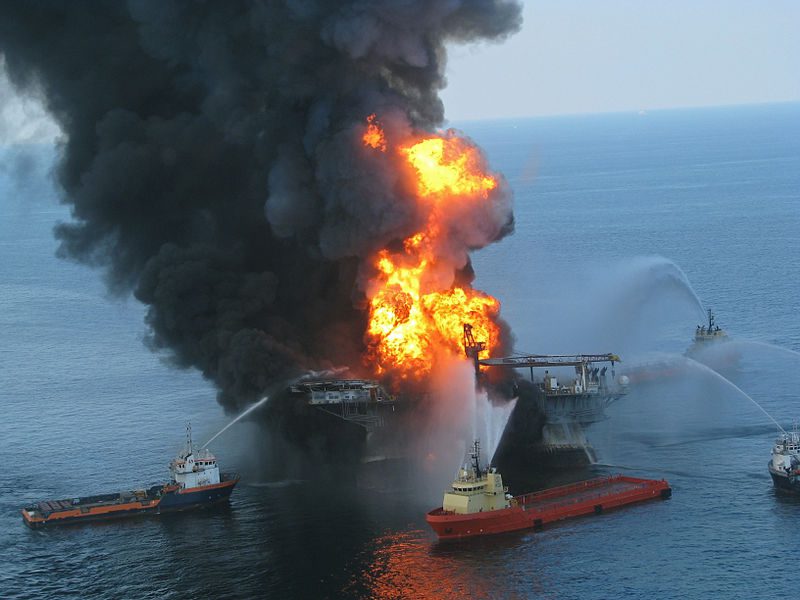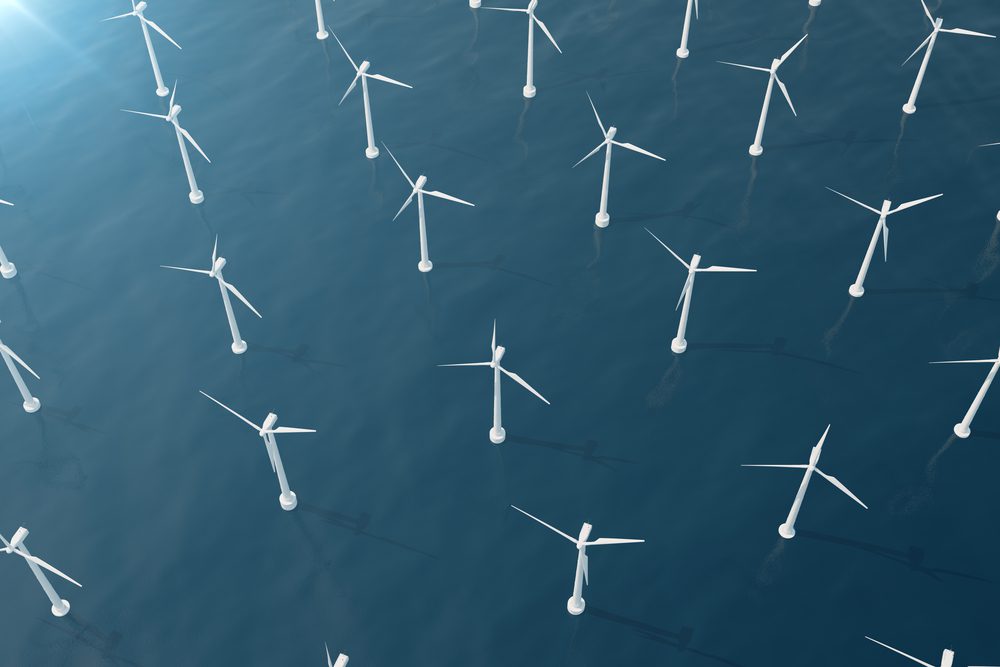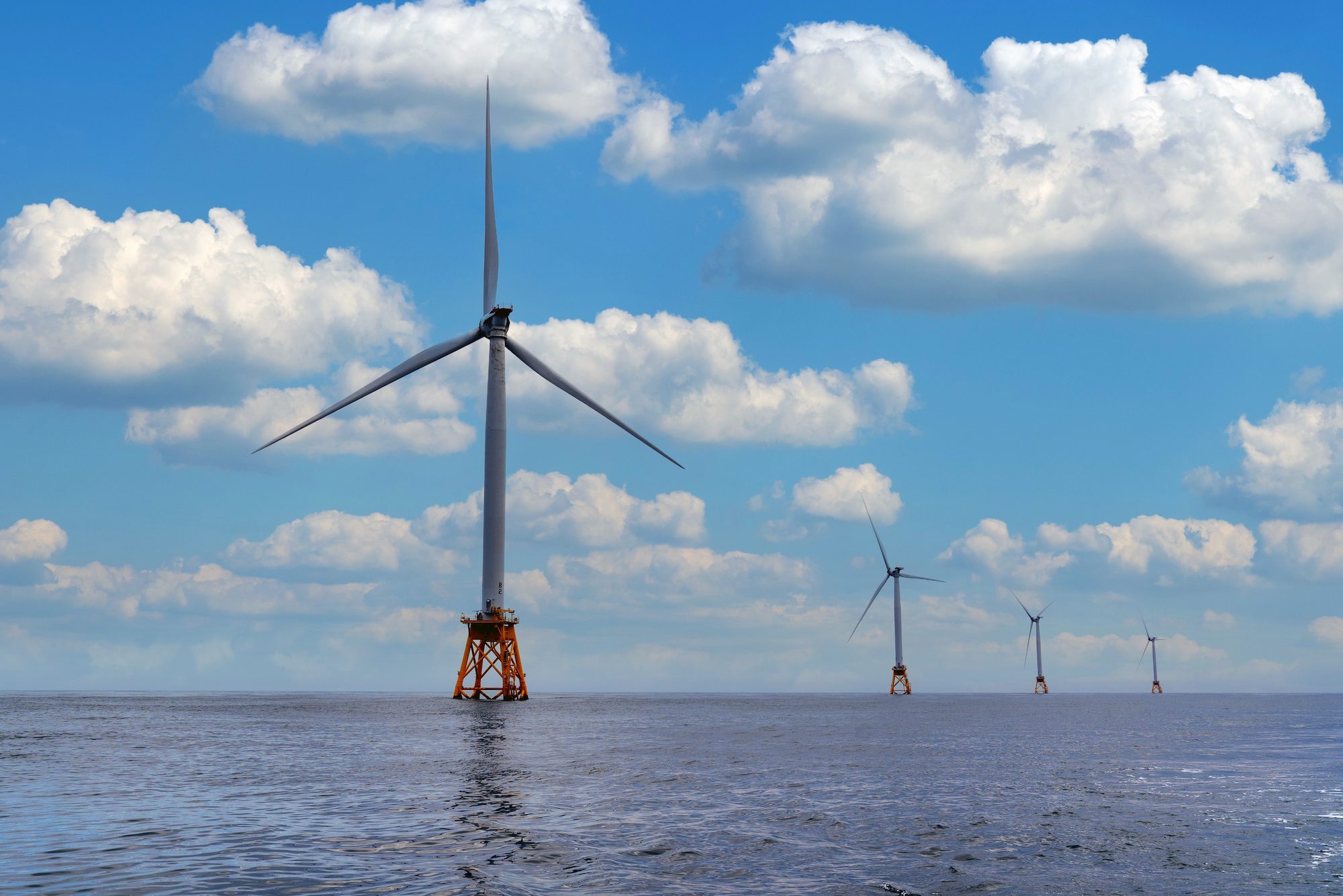Deepwater Horizon in flames in the Gulf of Mexico, April 21, 2010. U.S. Coast Guard Photo
By Mark Drajem
(Bloomberg) — The Obama administration proposed tighter rules for the offshore drilling equipment designed to be a last line of defense against oil-well blowouts, five years after the fatal BP Plc spill off Louisiana fouled the Gulf of Mexico.
The proposal Monday by the Interior Department builds on standards industry has set for so-called blowout preventers since the April 2010 disaster on the Deepwater Horizon rig, and establishes schedules for maintenance and repair. If adopted, the rules would mandate outside audits of equipment, require each device to have a backup shear to cut a pipe, and call for real-time monitoring onshore for heat and pressure at the well.
“The well-control rule specifically responds to a number of recommendations from those investigating” the BP spill, Interior Secretary Sally Jewell said on a media conference call. “As offshore production continues to grow, we owe it to the American people to ensure the resource is being developed safely.”
Offshore drilling safety has gained additional political significance as President Barack Obama has proposed opening up areas along the Southeastern U.S. coast for oil drilling for the first time. The Interior Department also is grappling with the application by Royal Dutch Shell Plc to explore in Alaska’s Arctic seas, and has proposed separate standards for drilling in those harsh northern conditions.
Industry Costs
The rule would cost the industry an estimated $88 million a year over the next 10 years, with the steepest costs in 2015 of $165 million. Drillers and other outside groups will have 60 days to comment on the plan beginning April 15, and Jewell didn’t set a timeline for issuing the final regulation.
The rule would take effect three months after it’s finalized, with a three-year phase-in for the monitoring capability and five years for use of the double shears.
“We are reviewing the proposed rules,” Erik Milito, director of upstream operations at the American Petroleum Institute, said in a statement. “Improved standards for blowout preventers are one of the many ways industry has led the charge to make offshore operations even safer.”
The proposal is the latest in a series of safety steps the department has crafted since the blast that killed 11 men aboard the drilling rig and spewed oil for almost three months along the coast from Texas to Florida. Already in place are design and cementing rules for deep-sea wells along with the hiring of more federal inspectors.
Fine Cap
The Interior Department also has previously proposed increasing the cap on fines for spills, and toughened requirements on drilling equipment and well control.
The accident sparked thousands of lawsuits against BP, along with Transocean Ltd., the owner of the rig that sank, and Halliburton Co., which provided cementing services for the well.
Since the BP catastrophe, the blowout preventers — designed to clamp shut and seal off an oil pipe if pressures threaten an explosion — are being made stouter and bigger, with thicker steel. The one at BP’s well failed, leaving a broken pipe at the seafloor spewing millions of barrels into the Gulf for more than 12 weeks.
While the device garnered headlines at the time, Jewell said its failure was just one of many that led to the disaster.
The public may submit comments on the proposed regulations during the 60-day comment period that begins April 15, 2015, when the proposed rule is published in the Federal Register. Comments may be submitted via regulations.gov, the federal government’s official rulemaking portal. The proposed regulations are available here.
©2015 Bloomberg News
Tags:

 Join The Club
Join The Club











